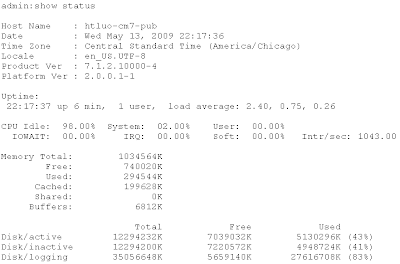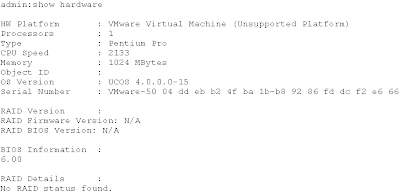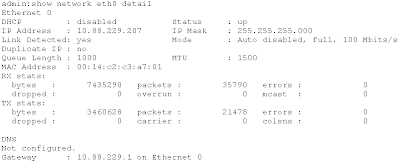Cisco built many Unified Communication "Appliance" based on Linux, such as CUCM (Communication Manager, a.k.a. CallManager), CUPS (Presence Server), CER (Emergency Responder, a.k.a. e911), etc.
Even though those appliances are built on Linux, Cisco does not give you shell access to the box (if you know about Linux, you know what a "shell" means). This is for security and maintenance purpose.
However, some of the maintenance work needs to be done via command line. Cisco built a customized command line interface (CLI) for UC appliances. Since most of the UC appliances share the same OS, they also share the same sets of CLI commands.
Mastering some of the CLI commands would make your life easier (or you may impress your colleagues or boss by showing off some of the rarely used commands).
Some basics:
0) To get access to the CLI, you need the "OS Administration" credential. "OS Administration" credential is stored in /etc/passwd file, while "Application Administration" credential is stored in database.
1) To access the CLI, you may either go to the sever console or SSH to it. (Telnet is not supported for security reasons).
2) Cisco keeps adding new commands to CLI. Some of the commands are available on new versions (such as CUCM 7.x) but not available on old versions (such as CUCM 6.x).
3) You may always use question mark (?) and tab key to get help.
4) Unlink IOS, UC Appliance CLI doesn't take abbreviations. You'll have to give the full command (either type it yourself or use the tab key).
5) "show" command is to display information
6) "set" and "unset" commands are to change configuration
7) "utils" command is run maintenance utilities (such as system reboot, backup/restore, etc.)
8) "run sql" command is to run SQL query against the database.
Part 1: Getting system infoshow status

This command will give you the following information:
- Hostname of the box
- Current date/time on the box
- Current time zone configured on the box
- Current version
- How long the system has been up and running
- CPU/Memory/Hard Disk usage
For example, if you cannot access the web interface of your CUCM box, you open a case. TAC engineer asks you what version is the CUCM. If you can access to the CLI, you may find out the version. This could possibly speed up the resolution.
show hardware

This command would give you the hardware information (such as serial number of the box). If you need to find out the serial number remotely, you may SSH to the box and use this command. Serial number is critical for entitlement and tech support.
show network eth0 detail

This gives you the following information:
- IP address of the box
- MAC address
- DNS
- Gateway
This command is useful if you need to check the MAC address quickly (for licensing purpose).
To see all "show" commands, type "show ?"





